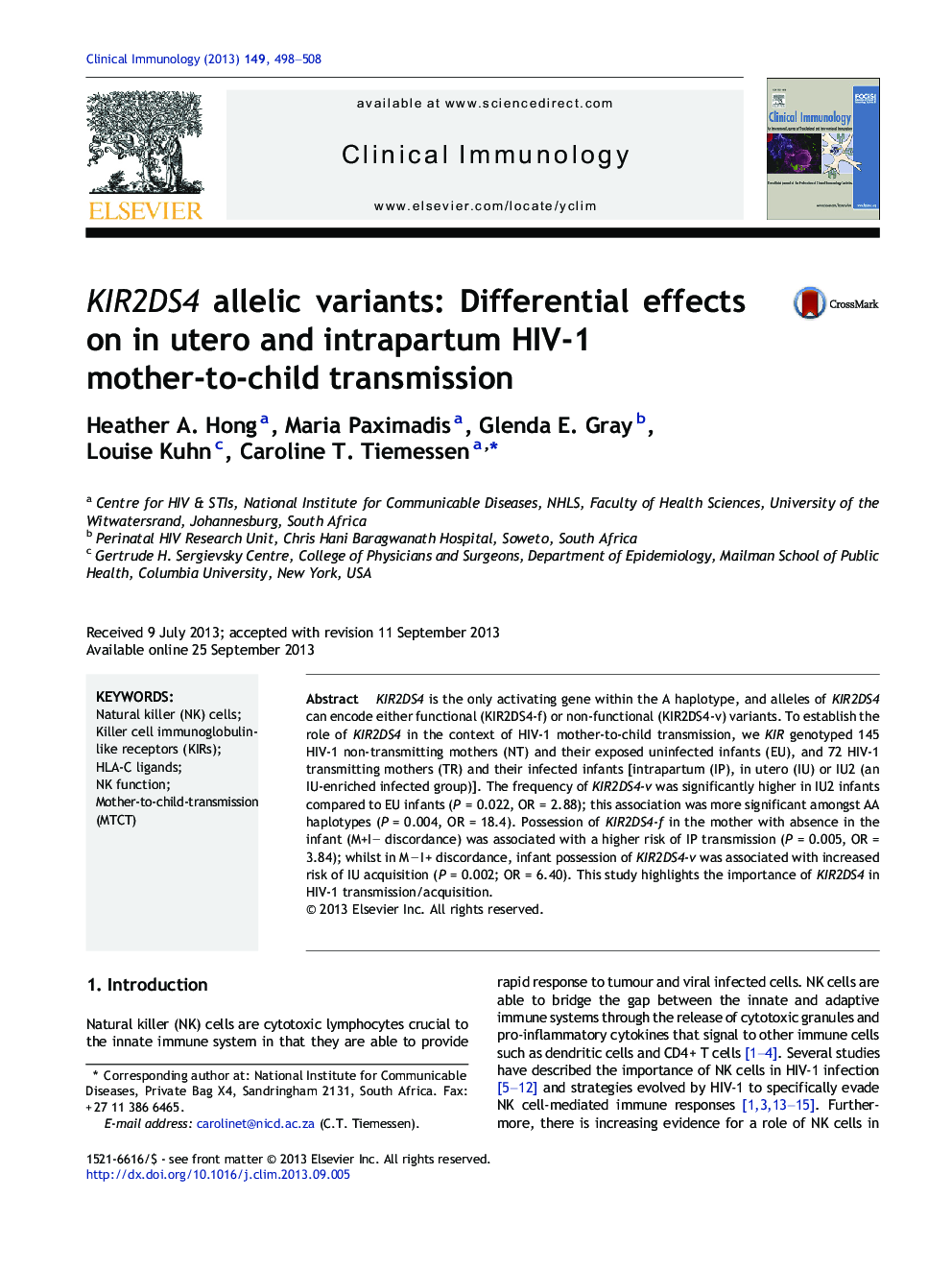| Article ID | Journal | Published Year | Pages | File Type |
|---|---|---|---|---|
| 6087619 | Clinical Immunology | 2013 | 11 Pages |
â¢Maternal KIR2DS4-f was associated with increased risk for IP HIV-1 transmissionâ¢Infant KIR2DS4-v was associated with increased risk for IU HIV-1 acquisitionâ¢KIR2DS4-v IU acquisition risk increased when infants were AA haplotype
KIR2DS4 is the only activating gene within the A haplotype, and alleles of KIR2DS4 can encode either functional (KIR2DS4-f) or non-functional (KIR2DS4-v) variants. To establish the role of KIR2DS4 in the context of HIV-1 mother-to-child transmission, we KIR genotyped 145 HIV-1 non-transmitting mothers (NT) and their exposed uninfected infants (EU), and 72 HIV-1 transmitting mothers (TR) and their infected infants [intrapartum (IP), in utero (IU) or IU2 (an IU-enriched infected group)]. The frequency of KIR2DS4-v was significantly higher in IU2 infants compared to EU infants (P = 0.022, OR = 2.88); this association was more significant amongst AA haplotypes (P = 0.004, OR = 18.4). Possession of KIR2DS4-f in the mother with absence in the infant (M+I â discordance) was associated with a higher risk of IP transmission (P = 0.005, OR = 3.84); whilst in M â I + discordance, infant possession of KIR2DS4-v was associated with increased risk of IU acquisition (P = 0.002; OR = 6.40). This study highlights the importance of KIR2DS4 in HIV-1 transmission/acquisition.
